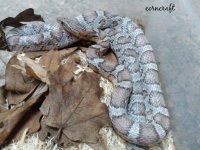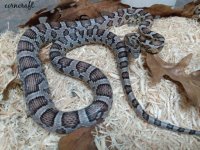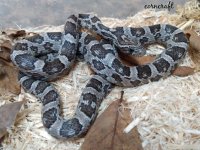Sharonsnake
New member
Hi I’m still very new to corn snakes and have the opportunity to home a young black and white Anery (sorry if that means the same thing!) snake and just wondered if colour changes into adulthood?
Do snakes fade with age or maintain a colour vibrancy? I’ve never seen an adult corn snake so would love to see any of your pics - especially if black and white ones.
Thank you
Do snakes fade with age or maintain a colour vibrancy? I’ve never seen an adult corn snake so would love to see any of your pics - especially if black and white ones.
Thank you



